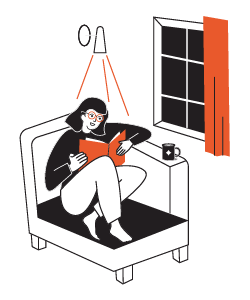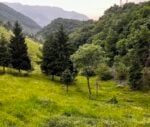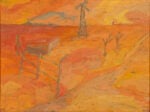#RestiamoConnessi #Let’sGetTogetherAndFeelAlright – Öystein Aasan
 (1200x551).jpg)
Iniziamo la serie di focus sugli artisti rappresentati dalla Galleria Enrico Astuni con Öystein Aasan.
Comunicato stampa
ÖYSTEIN AASAN
Nato nel 1977 a Kristiansand, Norvegia, vive e lavora a Berlino; si è formato al National Collage of Art and Design, Oslo. Nella sua pratica usa architettura, collage, scultura e pittura per indirizzare la memoria, la funzione delle immagini e il luogo dell’osservatore.
Sue opere fanno parte di collezioni pubbliche fra cui Sørlandets Art Museum, Norway; The National Museum of Arts, Norway; City of Oslo Public Collection; ICART, Oslo; KpA, Oslo; Collection Yoko Ono, New York; Norwegian Labour Party, Oslo.
Riconosciuto a livello internazionale, fra le recenti mostre personali ricordiamo le esposizioni presso Edward Munch Haus, Warnemünde, con Knut Henrik Henriksen (2020); True-False Stories. The Museum as a site of interpretation, con Paolo Chiasera, Musée d’ Art Contemporaine Sion, Musée de Bagnes, Musée du Loetschental, Musée valaisan de la Vigne et du Vin, Switzerland (2019); L40 | Kunstverein am Rosa–Luxemburg–Platz, Berlino (2019); Kristiansand Kunsthall (2018); Kunstverein Arnsberg, Arnsberg, Germania (2017). Tra le mostre collettive più recenti ricordiamo Minimalism?, Blomqvist, Oslo (2019); Three little maids from school, QB Gallery, Oslo (2019); Mies in Berlin, Kunstverein Rosa-Luxemburg Verein (2018); Randi Thommessen’s samling, Rake, Trondheim, Norvegia (2018); Det felles Eide, Kunstnernes Hus, Oslo (2018); Norsk Minimalisme?, Blomqvist, Oslo (2018).
DOWNLOAD BIOGRAPHY
La nostra collaborazione è iniziata nel 2017, con la mostra collettiva a cura di Lorenzo Bruni Il Frammento come Strumento. Per un'archeologia dell'effimero, in cui Öystein Aasan ha indagato il tema del monumento e della sua nuova possibile funzione. Ha creato Display Unit (counter image), 2017, una "struttura/piattaforma che indaga lo stato di salute dell’eredità del Modernismo e le connessioni tra architettura, rito e concetto di sublime." (L.B.)
/
Our collaboration started in 2017, with the group show curated by Lorenzo Bruni Il Frammento come Strumento. Per un'archeologia dell'effimero, where Öystein Aasan investigated about the theme of the monument and its new possible function, by creatying Display Unit (counter image), 2017, a "structure/platform that investigates the state of health of modernism heritage and the connections between architecture, rite and concept of sublime." (L.B.)
From the left: artist Öystein Aasan, artist Maria Thereza Alves, curator Lorenzo Bruni. Opening Il Frammento come Strumento. Per un'archeologia dell'effimero, Galleria Enrico Astuni, July 2017.
Nel 2018 esce il libro d’artista Never ending memory, un focus sulla pratica artistica di Øystein Aasan.
/
In 2018 was published the artist book Never ending memory, focusing on the overall praxis of Øystein Aasan.
LOST serie
In occasione di Artissima 2019 Öystein Aasan ha creato per la Galleria un nuovo sorprendente progetto: Lost.
Le opere della serie Lost sono rappresentazioni fotografiche di opere d'arte scomparse o distrutte o alterate durante la seconda guerra mondiale, di cui esistono solo fotografie, che l’artista ha cercato, trovato, e ricoperto con cera d'api, per proteggerle e preservarle. La cera d'api è un metodo di conservazione antichissimo qui utilizzato dall’artista come contrappunto al senso di tempo accelerato dato dal danno alle opere d'arte condensato in secondi, dove, in circostanze normali, avrebbe preso decenni.
/
In 2019, in occasion of Artissima, Öystein Aasan created for the Gallery a new amazing project: Lost.
The works from Lost serie are photographic depictions of works of art that disappeared or was destroyed or altered during the second world war, of which only photographs exist. The artists researched it, and choose to pour beeswax over the photographs as a means of protecting and preserving the image. Beeswax is an age-old way of preservation, here used by the artist as a counterpoint to the sense of time speeding up, where the damage to the artwork seems to have condensed the damage that under normal circumstances would have taken decades, into seconds.
ÖYSTEIN AASAN
Nato nel 1977 a Kristiansand, Norvegia, vive e lavora a Berlino; si è formato al National Collage of Art and Design, Oslo. Nella sua pratica usa architettura, collage, scultura e pittura per indirizzare la memoria, la funzione delle immagini e il luogo dell’osservatore.
Sue opere fanno parte di collezioni pubbliche fra cui Sørlandets Art Museum, Norway; The National Museum of Arts, Norway; City of Oslo Public Collection; ICART, Oslo; KpA, Oslo; Collection Yoko Ono, New York; Norwegian Labour Party, Oslo.
Riconosciuto a livello internazionale, fra le recenti mostre personali ricordiamo le esposizioni presso Edward Munch Haus, Warnemünde, con Knut Henrik Henriksen (2020); True-False Stories. The Museum as a site of interpretation, con Paolo Chiasera, Musée d’ Art Contemporaine Sion, Musée de Bagnes, Musée du Loetschental, Musée valaisan de la Vigne et du Vin, Switzerland (2019); L40 | Kunstverein am Rosa–Luxemburg–Platz, Berlino (2019); Kristiansand Kunsthall (2018); Kunstverein Arnsberg, Arnsberg, Germania (2017). Tra le mostre collettive più recenti ricordiamo Minimalism?, Blomqvist, Oslo (2019); Three little maids from school, QB Gallery, Oslo (2019); Mies in Berlin, Kunstverein Rosa-Luxemburg Verein (2018); Randi Thommessen’s samling, Rake, Trondheim, Norvegia (2018); Det felles Eide, Kunstnernes Hus, Oslo (2018); Norsk Minimalisme?, Blomqvist, Oslo (2018).
DOWNLOAD BIOGRAPHY
La nostra collaborazione è iniziata nel 2017, con la mostra collettiva a cura di Lorenzo Bruni Il Frammento come Strumento. Per un'archeologia dell'effimero, in cui Öystein Aasan ha indagato il tema del monumento e della sua nuova possibile funzione. Ha creato Display Unit (counter image), 2017, una "struttura/piattaforma che indaga lo stato di salute dell’eredità del Modernismo e le connessioni tra architettura, rito e concetto di sublime." (L.B.)
/
Our collaboration started in 2017, with the group show curated by Lorenzo Bruni Il Frammento come Strumento. Per un'archeologia dell'effimero, where Öystein Aasan investigated about the theme of the monument and its new possible function, by creatying Display Unit (counter image), 2017, a "structure/platform that investigates the state of health of modernism heritage and the connections between architecture, rite and concept of sublime." (L.B.)
From the left: artist Öystein Aasan, artist Maria Thereza Alves, curator Lorenzo Bruni. Opening Il Frammento come Strumento. Per un'archeologia dell'effimero, Galleria Enrico Astuni, July 2017.
Nel 2018 esce il libro d’artista Never ending memory, un focus sulla pratica artistica di Øystein Aasan.
/
In 2018 was published the artist book Never ending memory, focusing on the overall praxis of Øystein Aasan.
LOST serie
In occasione di Artissima 2019 Öystein Aasan ha creato per la Galleria un nuovo sorprendente progetto: Lost.
Le opere della serie Lost sono rappresentazioni fotografiche di opere d'arte scomparse o distrutte o alterate durante la seconda guerra mondiale, di cui esistono solo fotografie, che l’artista ha cercato, trovato, e ricoperto con cera d'api, per proteggerle e preservarle. La cera d'api è un metodo di conservazione antichissimo qui utilizzato dall’artista come contrappunto al senso di tempo accelerato dato dal danno alle opere d'arte condensato in secondi, dove, in circostanze normali, avrebbe preso decenni.
/
In 2019, in occasion of Artissima, Öystein Aasan created for the Gallery a new amazing project: Lost.
The works from Lost serie are photographic depictions of works of art that disappeared or was destroyed or altered during the second world war, of which only photographs exist. The artists researched it, and choose to pour beeswax over the photographs as a means of protecting and preserving the image. Beeswax is an age-old way of preservation, here used by the artist as a counterpoint to the sense of time speeding up, where the damage to the artwork seems to have condensed the damage that under normal circumstances would have taken decades, into seconds.



